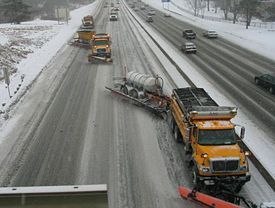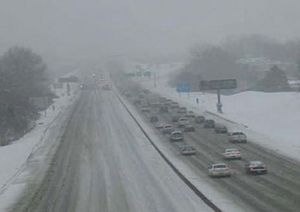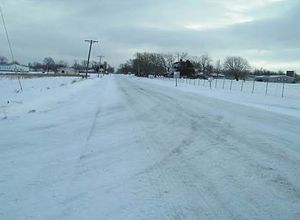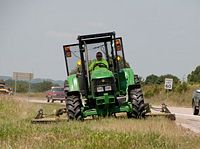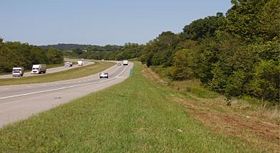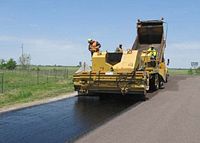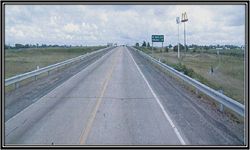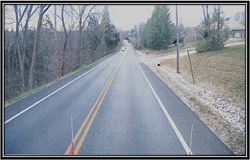Difference between revisions of "Category:144 Practical Operations"
m (NW district continuous operation routes updated, per Maintenance.) |
m (→144.5 Pavement Maintenance: Updated link) |
||
| Line 151: | Line 151: | ||
* The correct treatment will be selected for the road conditions, using the [http://epg.modot.mo.gov/index.php?title=Other_Aspects_of_Pavement_Design#Pavement_Design_for_Scoping pavement options chart]. | * The correct treatment will be selected for the road conditions, using the [http://epg.modot.mo.gov/index.php?title=Other_Aspects_of_Pavement_Design#Pavement_Design_for_Scoping pavement options chart]. | ||
| − | * We will track which treatments work best for future planning, using the [http:// | + | * We will track which treatments work best for future planning, using the [http://flexmaps.dot.missouri/index.html?configlink=paveproj pavement planning tool]. |
* Our performance will be measured by the percent of major and minor roadways in good condition and the dollars invested in pavement maintenance per lane mile (Statewide Transportation Improvement Program and the Operating Budget). | * Our performance will be measured by the percent of major and minor roadways in good condition and the dollars invested in pavement maintenance per lane mile (Statewide Transportation Improvement Program and the Operating Budget). | ||
Revision as of 11:32, 22 May 2012
| Handouts |
| Winter Operations |
| Mowing |
| Pavement Maintenance |
Because of dramatically constrained revenues, MoDOT will do more quality work with fewer resources. MoDOT will:
- Honor commitments in the STIP
- Keep major roads in good condition
- Improve condition of minor roads
- Hold our own on bridges so their condition does not get worse
- Maintain high customer satisfaction
The operations departments will make internal operations more efficient. MoDOT has a new direction in five major areas of work including snow removal, striping, signing, mowing and pavement maintenance. All savings from these operational changes will be used to preserve MoDOT’s high customer satisfaction by keeping our major roads in good condition by producing more quality work on pavements, improving minor roads and maintaining bridges so their conditions don’t get worse.

| Northwest District | Northeast District | |
| Kansas City District | Central District | |
| Saint Louis District | Southwest District | |
| Southeast District | ||
Contents
144.1 Winter Operations Changes
“Continuous Operations” definition has been revised by reprioritizing the roads for regional significance. A route needs to be a major route or have an AADT of at least 2500 to receive treatment as a “Continuous Operations Route”, as shown in the map to the right. Continuous operations will be performed until roads are mostly clear. Crews will return next working day and continue fight where progress can be made. Emergency crews are to be ready to handle overnight refreeze/slick spots.
"Non-Continuous Operations Routes” (typically, low volume minor routes), will be plowed open to two-way traffic. Hills, curves and intersections will be treated as needed.
There are five types of winter events:
- Type 5 – Frost, flurries, freezing fog, blowing snow and refreeze
- Type 4 – Dusting to 1 in. of snow, sleet, or other frozen precipitation
- Type 3 – 1 in. to 6 in. of snow/frozen precipitation in 24 hours OR a trace to ½ in. of ice
- Type 2 – 6 to 12 in. of snow in 24 hours or ½ to ¾ in. ice
- Type 1 – More than 12 in. of snow in 24 hours or more than ¾ in. ice
The truck fleet will be reduced over three years and the use of salt will also be reduced. MoDOT will continue to plow snow and treat roads and focus efforts on making roads safe and passable. Practical Operations will efficiently attack each storm by providing statewide consistency.
Winter Operations Key Focus
- Plow snow and treat roads to make the roads safe and passable
- Prioritize roads by type and regional significance
- Have an efficient plan of attack for each storm type
- Be consistent across the state
Major Roads Plowed Mostly Clear
- Crews will provide continuous operations to major roads and roads of regional significance
until conditions are mostly clear.
- Overnight, emergency crews will monitor for slick spots.
- The following day in normal business hours, crews will work on road conditions on these roads and lower priority roads.
Low Volume Roads (<2,500 daily traffic)
- Loose snow will be plowed to two-way passable traffic.
- Hills, curves and intersections will be treated
144.2 Signing Operations Changes
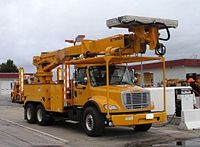 |
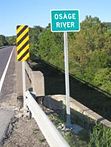
|
MoDOT will significantly reduce sign and post inventories by replacing only “bad” or “needed” signs and permitting wood posts on low volume roads. Nighttime sign inspections will be conducted annually. The plumb criteria will be revised for minor road signs. MoDOT will use the minimum size signpost necessary to support the sign and will reuse structural posts and bases when possible. Also, MoDOT will design new signs to fit existing bases and posts, where possible.
Signing and striping crews will be combined in all the districts and large equipment will be regionalized. In early 2012, the Sign Management System will be used to streamline the management and ordering process.
144.3 Striping Operations Changes
 |

|
Every major road will be restriped before Memorial Day and every “Regionally significant” minor road after Memorial Day. Fifty per cent of the remaining minor roads will be striped every year. One paint and bead system will be used on edge lines. Two crews per striper will be utilized. Quality striping will be maintained even while the use of 3M reflective tape will be phased out.
Signing and striping crews will be combined in all the districts and the striper fleet will be reduced over three years.
144.4 Mowing Operations Changes
- All major routes will be mowed by MoDOT crews prior to Memorial Day, July Fourth and Labor Day.
- Crews will mow the first 15 ft. from the edge of the pavement and medians that are narrower than 60 ft.
- The 15 ft. wide mowing path will allow good sight distance for drivers, which is important for safety.
- Minor roads will be mowed during the growing season as needed to keep the nearest strip to the edge of pavement at 12 inches in urban areas and 18 inches in rural areas.
- MoDOT will also use plant growth regulators to keep the overall height of grass down and address weeds on minor roads and around safety devices.
- All major roads will have a final fall mowing up to 30 ft. wide.
- Minor roads will have a final fall mowing up to 30 ft. wide in odd years and up to 15 ft. wide in even years.
- MoDOT is also reducing contract mowing except for areas where specialty equipment is required due to steep slopes or other unique circumstances.
144.5 Pavement Maintenance
Pavement Maintenance Key Focus
- MoDOT will direct more resources towards maintaining the condition of major routes, improving the condition of or minor roads and holding our own on bridges.
- Over the duration of the Five-Year Direction, the targeted cost savings from efficiencies in snow removal, striping, signing, mowing and pavement maintenance will result in over $200 million being redirected specifically for the purpose of improving our pavements.
- MoDOT maintenance forces will do quality work that looks good and rides good when completed.
Pavement Maintenance Strategies
- Roads will be prioritized for treatment based on pavement condition and traffic volume.
- The correct treatment will be selected for the road conditions, using the pavement options chart.
- We will track which treatments work best for future planning, using the pavement planning tool.
- Our performance will be measured by the percent of major and minor roadways in good condition and the dollars invested in pavement maintenance per lane mile (Statewide Transportation Improvement Program and the Operating Budget).
Pages in category "144 Practical Operations"
This category contains only the following page.
